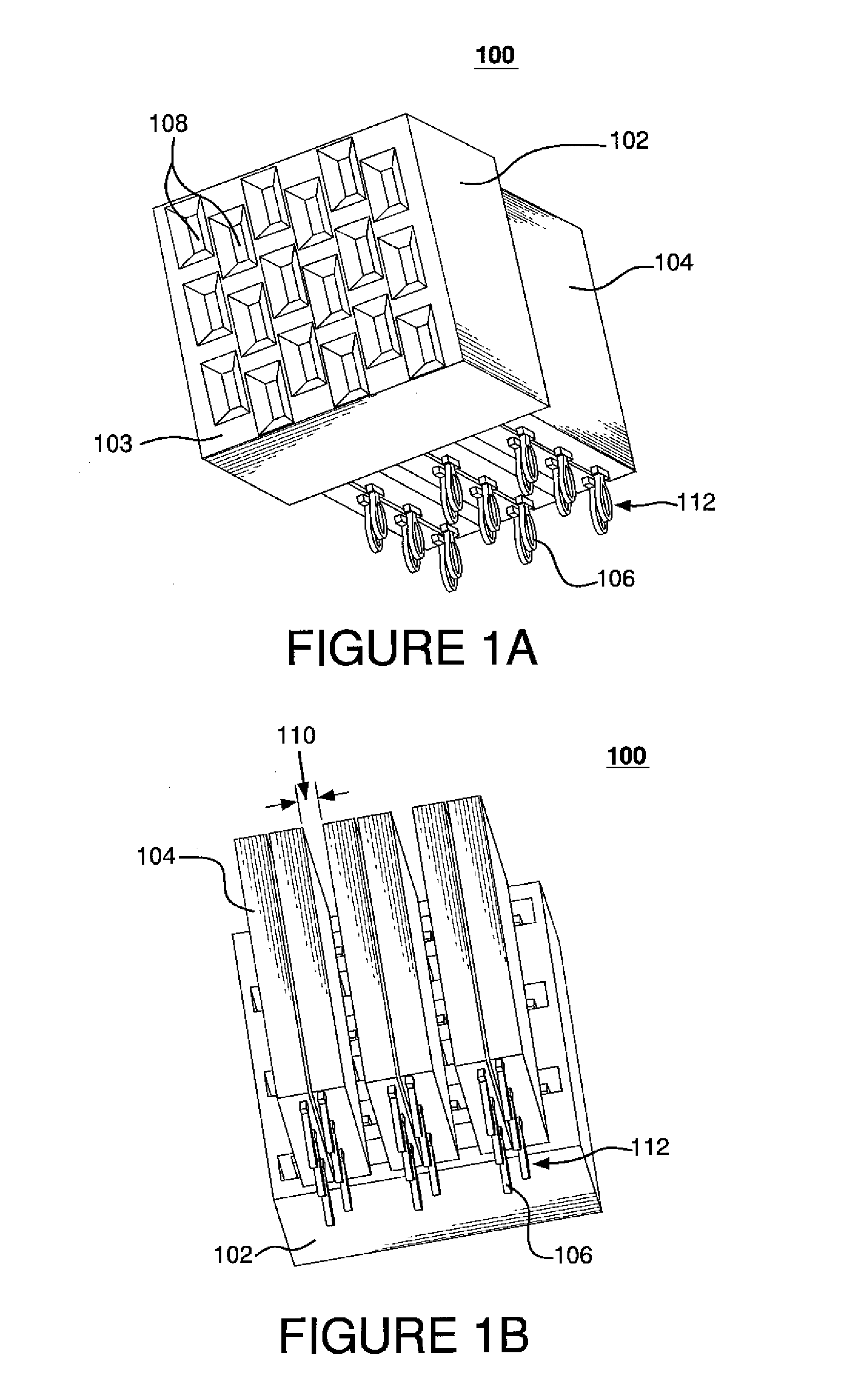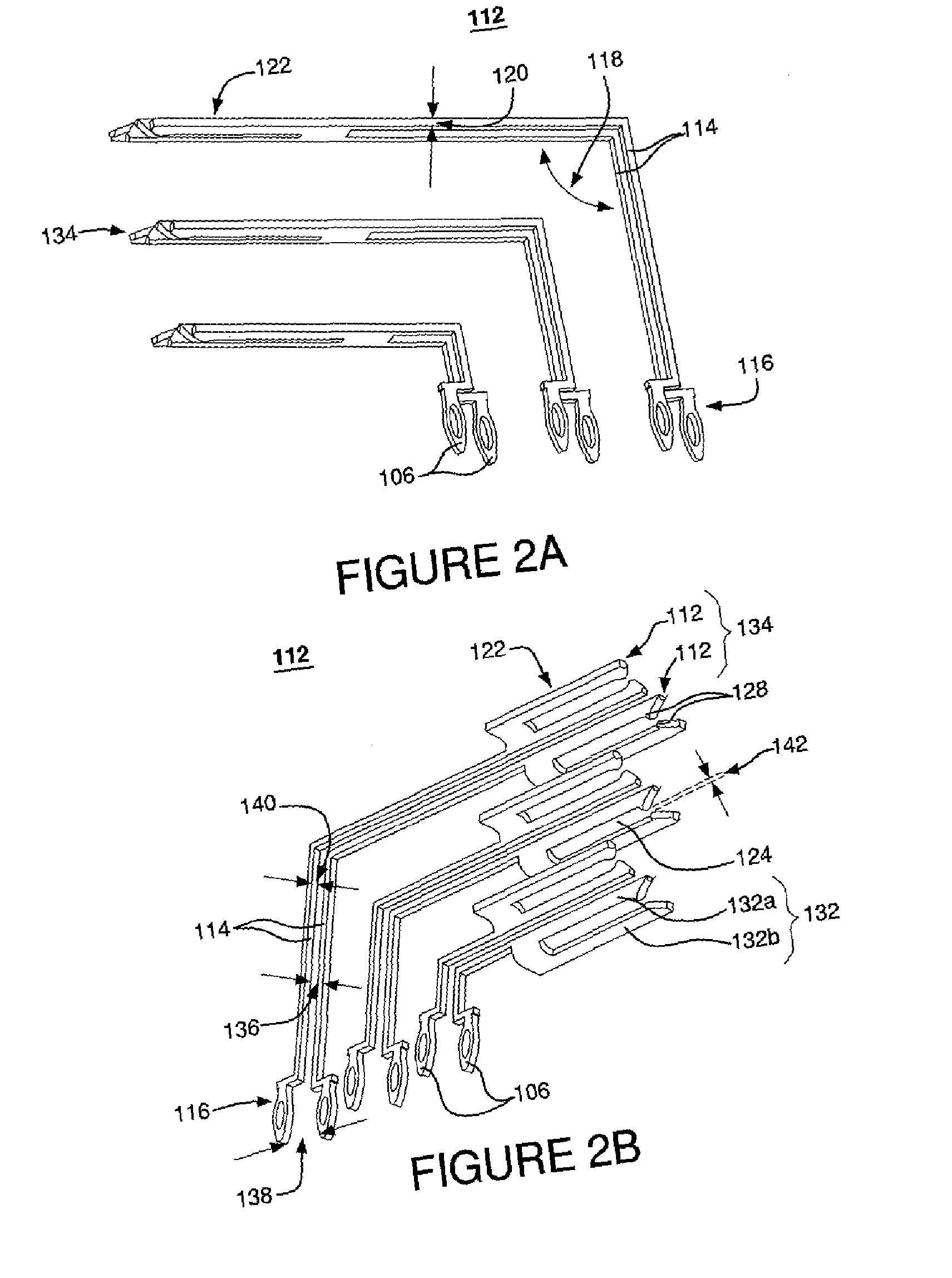High-density orthogonal connector
a connector and high-density technology, applied in the direction of coupling device connection, coupling contact member, coupling device details, etc., can solve the problems of signal skew, right-angle connectors may exhibit undesirable level of signal skew, and signal skew may be problematic, so as to reduce insertion loss, reduce weight, and constant impedance
- Summary
- Abstract
- Description
- Claims
- Application Information
AI Technical Summary
Benefits of technology
Problems solved by technology
Method used
Image
Examples
Embodiment Construction
[0029]FIGS. 1A and 1B depict perspective views of high-density orthogonal connector 100 having electrical contacts 112, mating interface housing 102 and one or more lead portion housings 104. Connector 100 may be a female, or receptacle, connector. Connector 100 may be a right-angle connector and may be implemented in either orthogonal or non-orthogonal printed circuit board (PCB) applications. Connector 100 may also be a mezzanine connector or a header connector. Connector 100 may be devoid of any electrical shielding and / or ground contacts.
[0030] Face 103 of mating interface housing 102 may define a receptacle interface, with multiple slots 108 for receiving electrical contacts on a mating connector (not shown in FIGS. 1A and 1B). Slots 108 may be arranged in columns. Each adjacent column of slots 108 may be offset from one another in the direction of the column. The backside of receptacle housing 102 may interface with one or more lead portion housings 104, which may be separate...
PUM
 Login to View More
Login to View More Abstract
Description
Claims
Application Information
 Login to View More
Login to View More - R&D
- Intellectual Property
- Life Sciences
- Materials
- Tech Scout
- Unparalleled Data Quality
- Higher Quality Content
- 60% Fewer Hallucinations
Browse by: Latest US Patents, China's latest patents, Technical Efficacy Thesaurus, Application Domain, Technology Topic, Popular Technical Reports.
© 2025 PatSnap. All rights reserved.Legal|Privacy policy|Modern Slavery Act Transparency Statement|Sitemap|About US| Contact US: help@patsnap.com



